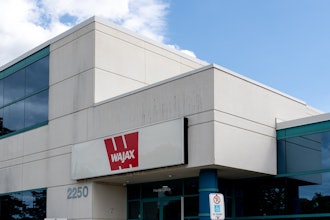
WASHINGTON — U.S. wholesale prices rose by the most in six years last month, led higher by more expensive gas, food, and chemicals.
The Labor Department said Friday that the producer price index — which measures price increases before they reach the consumer — leapt 0.6 percent in October, after a smaller 0.2 percent rise in September. Producer prices increased 2.9 percent from a year earlier.
Excluding the volatile food and energy categories, core wholesale prices rose 0.5 percent in October and 2.6 percent from a year earlier.
Despite last month's increase, the figures suggest inflation pressures are mostly in check. The year-over-year price increase is lower than it was in the summer, when it topped 3 percent. And oil prices declined in October, which will likely to lower gas costs in the coming months.
The Federal Reserve is keeping a close eye on price changes as it monitors the economy for signs of overheating. The unemployment rate is at a five-decade low of 3.7 percent and companies are raising wages and salaries to attract and keep workers. Average hourly pay rose in October from a year earlier at the fastest pace in nearly a decade.
Companies may have to raise prices to offset the costs of higher pay, which could spur higher inflation. But businesses could also invest in more machinery and software to make their employees more efficient, which would enable them to pay more without raising prices.
Fed policymakers finished a two-day meeting Thursday without changing the short-term interest rate they control. But most economists expect the Fed will hike short-term rates for a fourth time this year when it meets next in December. The Fed has signaled it expects to raise rates three more times next year.
After its meeting Thursday, the Fed issued a statement that suggested it saw little sign that inflation would accelerate beyond its 2 percent target. Consumer prices rose 2.3 percent in September from a year earlier.
Friday's report showed that wholesale gas prices rose 7.6 in October and food costs increased 1 percent. The price of new cars fell 0.7 percent, as automakers introduced their new car models last month. Newer cars typically include additional features and the government reflects that by lowering its measure of auto prices.






















